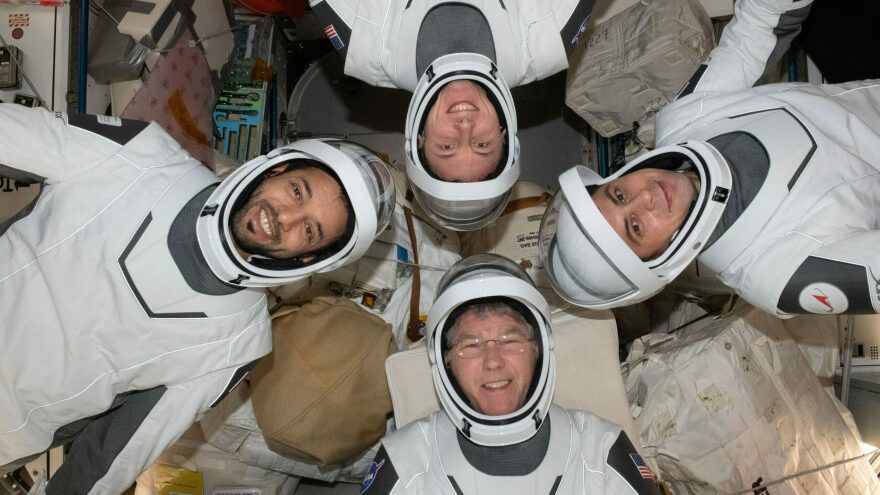Three astronauts and one cosmonaut have returned to earth, successfully completing a six-month stint in space.
NASA's Crew-6 mission began last March with a fiery nighttime launch from the Kennedy Space Center in Florida. It ended Monday, after nearly 3,000 orbits of the earth and 79 million miles traveled, just after midnight ET on Labor Day.
The SpaceX Crew Dragon capsule Endeavour pierced the atmosphere at 17,000 mph, its heat shield enduring temperatures hotter than 3,500 degrees Fahrenheit. Over the course of an hour, the capsule eventually slowed to a leisurely 15 mph under a canopy of parachutes with a gentle touchdown in the Atlantic Ocean off Jacksonville, Fla.
The splashdown capped a mission that spent a half-year on the International Space Station. Two NASA astronauts - mission commander Stephen Bowen and pilot Woody Hoburg - along with United Arab Emirates astronaut Sultan AlNeyadi and Russian cosmonaut Andrey Fedyaev - also served as flight engineers aboard the I.S.S.
They conducted more than 200 science experiments. Those included research on human health such as how monoclonal antibodies behave in microgravity. They also investigated how wave turbulence in space affects fuel in satellites.
In addition to the science experiments, Bowen, Hoburg and AlNeyadi conducted several spacewalks. They upgraded the space station's power systems and installed new solar arrays on the orbital outpost which has been continually inhabited since 2000.
The Crew-6 mission was relieved by the four members of Crew-7 which launched and arrived at the I.S.S. in late August. They'll also spend six months aboard the space station with an expected return in February 2024.
Copyright 2023 NPR. To see more, visit https://www.npr.org. 9(MDA4MzM1MjM1MDEzMTg5NTk0MzNmOTQ5MA004))




